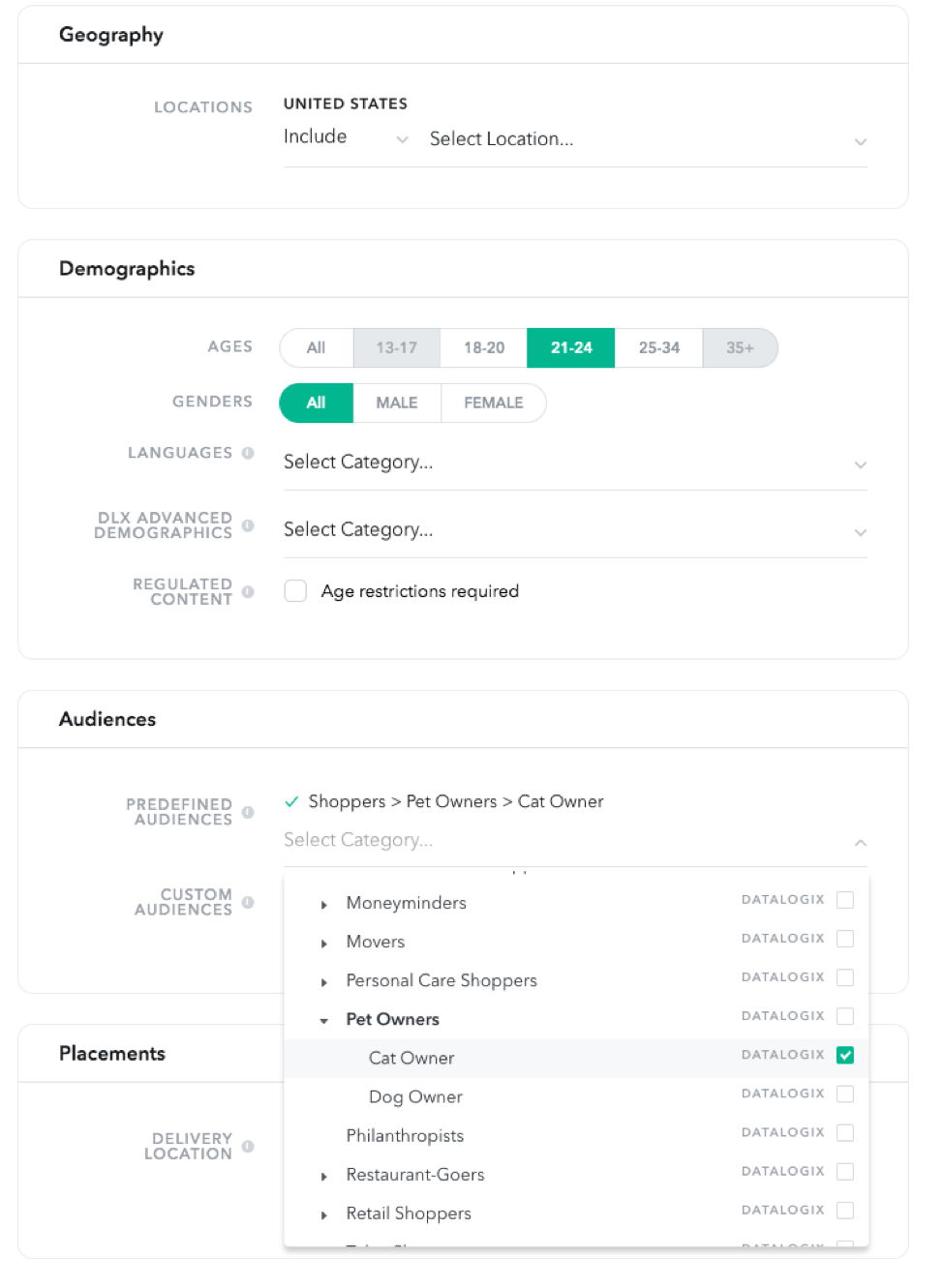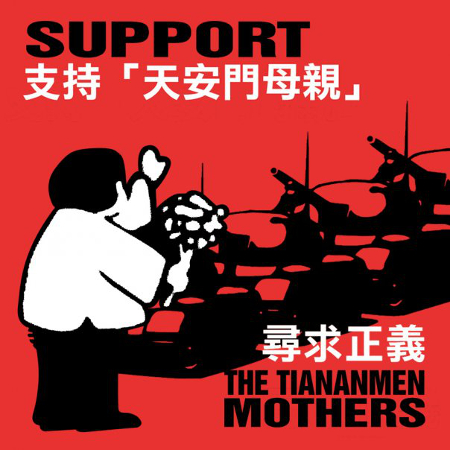Corporate Kairos and the Impossibility of the Anonymous, Ephemeral Messaging Dream
Yik Yak is dead. Pitched as a truly ephemeral and anonymous online community, the application died as the platform’s creators started adding structure and stabilization to the space. As imagined, Yik Yak was simply too open, too democratic, too anonymous, and too ephemeral to survive in the monetization-driven world of social media platforms today. Unlike Snapchat, which we use as counterpoint in this article, Yik Yak appears to have been incompatible at the structural level with what we call corporate kairos, the demand of corporate members of social media platforms to circumvent the normal rules of kairos and rhetorical velocity (Ridolfo and DeVoss). Without the user data and profiles needed to leverage algorithms and analytics for corporate usage, truly anonymous and ephemeral applications at best struggle against the dynamics of modern social media platforms, and at worst perish due to a lack of advertising dollars. In this essay, we first discuss how kairos and rhetorical velocity apply to current social media usage and advertising and use these terms to more fully explain our concept of corporate kairos. We apply that concept to both Snapchat’s success and Yik Yak’s failure, and we conclude with implications for designers, scholars, and researchers, particularly in rhetoric and professional writing.
Social Media, Kairos, and Rhetorical Velocity
When social media is discussed, the conversation focuses on the types of content that make those platforms successful: the user-created pieces that are circulated, recirculated, iterated on, and discarded daily. When we focus on successful content, we sometimes overlook the complex kairotic struggle of these posts: the influence of followers, friend lists, algorithms (Gallagher), and other factors that impact the success of a given post. David Sheridan, Jim Ridolfo, and Anthony Michel note that the kairotic struggle “as traditionally conceived, concerns the way a rhetor composes a text to ensure its success in a particular situation,” but “the rhetorical process exceeds the composing process; the rhetor’s work is not done when the composition is done” (60). As they explain, authors must consider rhetorical velocity of their texts, the differing ways that their creations may be used, shared, and rebuilt after the initial act of creation (79).
For the average user, maximizing rhetorical velocity on social media can be difficult. Just ask anyone who’s posted a late-night photo of their adorable cat only to wake up the next day to a disheartening like count of zero. The reach and viewership of a post—its rhetorical velocity—depends on the conditions for kairos in social media spaces: how appropriately the piece was timed for the specific platform, who ended up seeing it when it was posted, etc. The average user can get some help with the rhetorical velocity of their postings via posting guides (Fontein), but they’re limited by the amount of time and energy they’re willing to put into a posting, and the network of contacts they’ve cultivated to spread that posting around.
We bring this struggle into focus not to dive into the rhetorical velocity of average social media users, but to focus on the unequal control different users have over rhetorical velocity. As Tarleton Gillespie notes, there is an inherent tension within the platforms that comes with balancing the needs of the communities that call them home and the advertisers that pay to keep the servers running (348).
Corporate Kairos and the Commodification of Rhetorical Velocity
For corporate users, the situation is simpler: social media platforms are designed around giving them nearly total control of their content’s rhetorical velocity via analytics and advertising tools. The average user depends on having a network of followers/friends that are open to a given type of content to gain any rhetorical velocity; a company can browse through demographic data groups and pay a fee to have their content presented to the exact users they hope to reach, as seen in Figure 1.

Instead of waging a kairotic struggle for views, crafting the rhetorical velocity of their content, corporate users are simply able to pay to have their content show up in front of their desired audience. We dub this purely transactional form of rhetorical velocity corporate kairos. Corporate kairos is big business: Facebook alone has built $13 billion ad business on mobile devices by offering corporate kairos to advertisers (Truong).
Problems arise in this model when a social network’s basic infrastructure, the way that it treats users and content, conflicts with the conditions for corporate kairos. As evidenced by the histories of Snapchat and Yik Yak, there appear to be limits to how far a social network can move away from identity1 and permanence while still maintaining the conditions for corporate kairos. The tensions that Gillespie predicts become evident through a tracing of these divergent social media platforms, their treatment of anonymity and ephemerality, and their compatibility with corporate kairos.
Snapchat: From Naughty Selfies to IPO
When, in 2010, Mark Zuckerberg famously declared privacy was no longer a social norm (Johnson), the launch of Snapchat the following year appeared to be a counterpoint to Zuckerberg’s privacy-eschewing platform. Snapchat emerged as an answer to the problem of once online, always online content. As we look at Snapchat’s success, we consider Gillespie’s (2010) multi-definition of the word “platform.” This definition includes both a focus on users and a focus on monetization, and as we discuss throughout this piece, this balance can make or break a company. Snapchat has thrived not simply because the number of users on the platform, but because the platform allows ephemerality alongside stable corporate presences that aid monetization of the platform. The surprise here is not that Snapchat succeeded at all: it is that the application once labeled as a “sexting” application was able to shed its unsavory associations and thrive.
Launched in the summer of 2011, Snapchat was borne from its college student creators’ frustration with the current state of photo-messaging: in particular, the fact that the photos they sent could be accessed indefinitely. The application’s (primarily young) user base grew steadily throughout the year, but so did the controversy surrounding it. Nick Bilton’s New York Times piece convinced many that the application was simply one though which young people could send suggestive photos, presumably without consequence.
While concerns, especially from parents of young children, continue to abound, Snapchat has grown larger than ever. In the last quarter of 2016, Snapchat boasted 161 million daily users; in addition, users opened the application around 18 times a day, and users under 25 tended to visit the application even more (Novet). In March 2017, Snapchat went public with their company, Snap Inc., opening with an initial offering that valued the company at $24 billion (Roof).
Snapchat has managed this growth skillfully by allowing the simultaneous operation of corporate kairos and the controversial communications that brought it into the spotlight. In many ways there are two sides to Snapchat: the public-facing stories by users, celebrities, and companies, and the private peer-to-peer ephemeral content that was its cornerstone. By creating separate channels for user content, one side public-facing and more stable, the other private and ephemeral, Snapchat is able to build its user base on the promise of private online communication while still offering corporate entities the level of control over their own content they’ve come to expect.
The Stories feature is arguably the best avenue for monetization2, and it is a feature that both advertisers and users engage in that demonstrates the way that corporate kairos is integrated into the flow of Snapchat’s content. Advertising through the Stories feature allows corporate users control over the placement of their advertisement: either between individual stories or amongst curated, spotlighted Stories. Through this method, the likelihood of an advertisement being juxtaposed with a suggestive photo or videos is slim,3 and users can still share their desired content through private messaging. Both groups of users can use the application in the ways they see fit.
Yik Yak and the Futility of Monetizing Anonymity
Unlike Snapchat, Yik Yak was unable to translate early infamy and popularity into financial success, and we argue this failed transition was largely due to the platform’s structural incompatibility with corporate kairos. Like Snapchat, Yik Yak’s content was ephemeral, available by users for only a short time. But Yik Yak also provided its users anonymity, without so much as an avatar to represent them. If Snapchat challenged the once online, always online idea, Yik Yak sought to subvert it by both deleting content from public view and making sure that users could not identify other users. For many users, Yik Yak was more than its negative press: it was a shared, collaborative space in which they gained both freedom and protection through anonymity and ephemerality.
Yik Yak’s exponential growth in the year after its 2013 launch made it the subject of much buzz in the media. And so did the controversies surrounding the application—from allegations of hate speech, to terrorist threats, and more. A recent New York Times piece alleges that Yik Yak’s ultimate demise can be attributed to is inability to control this type of content (Safronova), but we argue that this questionable content was part of a larger incompatibility with corporate kairos.
Unlike Snapchat, Yik Yak never made the distinction between public-facing and private-facing communication, and never created the unequal playing field for rhetorical velocity that advertisers demand. Yik Yak was simply too democratic and open to anonymous communication. Without any sense of a stable identity, any user could pretend to be a corporate user and would have the same public audience, further subverting the traditional hierarchy of corporate reach over individual reach.
On Yik Yak, identity was simply something you could use and then discard at will. This central focus on a lack of identity both undermined the stability needed for corporate kairos and eventually led to the app’s death as users fled changes that traded anonymity for identity. In order to transition to more stable identities, Yik Yak introduced optional “handles” in March 2016. Handles, we argue, were an attempt to provide corporate users the type of kairotic control that they would need to advertise on the application,4 advertising that would be needed to allow the app to become profitable. When handles became mandatory and associated with user profiles a few months later in August 2016, users no longer had the ability to use the application in the way they had become accustomed. While this move may have provided a stable corporate identity to those corporate users who desired it, it flew in the face of users and communities that thrived in this shared space. The change would be reverted only three months later, but the damage was done and the app shed users rapidly.
Without stable identities and the ability to tailor content to meet those specific identities, Yik Yak couldn’t be sustained as a platform. The platform’s structure and the expectations of corporate users were incompatible with the very features that attracted users to Yik Yak: its intensely local, anonymous, and ephemeral nature. Attempts to move the platform closer to the required conditions for corporate kairos fundamentally altered the platforms nature, leading it to hemorrhage users and ultimately shut down in April 2017.
Implications: Control, Kairos, and the Inevitability of Identity in Social Media
From these two cases, we argue that a truly anonymous and ephemeral online space can’t be sustained in the current social media environment. Corporate kairos appears to be antithetical to a truly anonymous and ephemeral space: to ensure that advertisers have access to transactional rhetorical velocity, platforms have to keep track of who is posting, what they post, what they like, and who they are. But, by collecting that data, the spaces must forfeit their anonymous and ephemeral nature and become yet another social media network where losing privacy is the price of admission and the currency of continued platform success. The popularity of Yik Yak demonstrates that many users crave anonymity, but without the revenue that corporate kairos provides, the outlook for truly anonymous platforms is grim.
At best, platforms like Snapchat seem to be the closest that we can currently come to a private online experience. Private content remains hidden and peer-to-peer while public-facing content provides corporate users the stability they need to invest in the platform as a form of advertising. The private content comes at the cost of the public content and the stable identity formed over time. This public content and identity can then be mined to create datasets that allow for corporate kairos in the advertising on the platform. When push comes to shove, the needs of corporate users and the needs of platforms to keep the lights on and pay the bills push out any sort of truly ephemeral and anonymous online space.
At the end of the day, corporate kairos is kairos monetized: access and opportunity transformed into a good available to purchase for the right price. Understanding the long-term impact of this commodification of kairos, the reduction of identity to an identifiable demographic available for paid access, is shaping up to be an ongoing and evolving challenge for scholars of rhetoric. We already see the impact of corporate kairos in scandals over Russian meddling in the US election (Kastrenakes) and illegal racial targeting in real estate advertisement sales (Statt). Taken alone each of these facets are troubling, but combined with social media giants’ “fix it when we get caught” mentality, corporate kairos represents staggering rhetorical power with very little oversight. The way that social media platforms use our data is on its way to becoming a very public conversation in the political and professional world, and scholars in our field need to be heard in this ongoing discussion of what it means to compose in social media spaces.
Acknowledgements
This text is a truly collaborative piece and would not exist without the equal participation of each author. In addition, we are deeply indebted to the insightful feedback and guidance from our editors and anonymous reviewers during the writing and revision process.
Endnotes
-
- While we acknowledge that this is a slippery term, we use it in this piece as an umbrella term for “user data,” “username,” or “profiles.” return
- Stories has become so successful that major players in online communication including Instragram (“Introducing Instagram Stories”), Facebook (Hayes), and Microsoft (“Introducing the Next Generation”) are seeking to emulate this high-traffic feature on their own platforms. return
- Simply being next to questionable content on social media can be problematic for advertisers (Maheshwari). Snapchat has taken several steps to actively clean up their public-facing content as they’ve become a publicly traded company (Heath). return
- The application’s founders justified this shift away from anonymity as a way for users to “feel closer and more connected” (Droll). return
Works Cited
- Bilton, Nick. “Disruptions: Indiscreet Photos, Glimpsed Then Gone.” New York Times: Bits, 6 May 2012, https://nyti.ms/2lnc6n4. Accessed 28 June 2017.
- Droll, Tyler. “Introducing Handles!” Yik Yak Blog, 8 Mar. 2016, http://blog.yikyak.com/blog/introducing-handles. Accessed via Internet Archive, https://web.archive.org/web/20170507184445/http://blog.yikyak.com/blog/introducing-handles, 28 June 2017.
- Fontein, Dana. “The Best Time to Post on Facebook, Twitter, and Instagram.” Hootsuite Blogs, 21 Nov. 2016, https://blog.hootsuite.com/best-time-to-post-on-facebook-twitter-instagram. Accessed 13 July 2017.
- Gallagher, John R. “Writing for Algorithmic Audiences.” Computers and Composition, vol. 45, 2017, pp. 25-35.
- Gillespie, Tarleton. “The Politics of ‘Platforms’.” New Media & Society, vol. 12, no. 3, 2010, pp. 347-364.
- Hayes, Connor. “More Ways to Share With the Facebook Camera.” Facebook Newsroom, 28 Mar. 2017, https://newsroom.fb.com/news/2017/03/more-ways-to-share-with-the-facebook-camera/. Accessed 6 July 2017.
- Heath, Alex. “Snapchat Is Cracking Down on Racy and Misleading Content in Its Discover Section.” Business Insider, 23 Jan. 2017, www.businessinsider.com/snapchat-cracks-down-on-sexual-and-misleading-stories-in-discover-2017-1. Accessed 17 July 2017.
- “Introducing Instagram Stories.” Instagram, 2. Aug. 2016, http://blog.instagram.com/post/148348940287/160802-stories. Accessed 6 July 2017.
- “Introducing the Next Generation of Skype.” Skype News Blog, 1 June 2017, https://blogs.skype.com/news/2017/06/01/introducing-the-next-generation-of-skype/. Accessed 6 July 2017.
- Johnson, Bobbie. “Privacy no longer a social norm, says Facebook founder.” The Guardian, 10 Jan. 2010, https://www.theguardian.com/technology/2010/jan/11/facebook-privacy. Accessed 28 June 2017.
- Kastrenakes, Jacob. “Facebook showed Russia’s election ads to 10 million people.” The Verge, 2 Oct. 2017, https://www.theverge.com/2017/10/2/16405974/facebook-russian-election-ads-10-million-viewers. Accessed 27 Nov. 2017.
- Maheshwari, Sapna. “Snapchat Pornography To Test Advertisers’ Tolerance for Risk.” New York Times, 10 March 2017, https://www.nytimes.com/2017/03/10/business/media/snapchat-porn-advertising.html. Accessed 17 July 2017.
- Novet, Jordan. “Snapchat by the numbers: 161 million daily users in Q4 2016, users visit 18 times a day.” Venture Beat, 2 Feb. 2017, https://venturebeat.com/2017/02/02/snapchat-by-the-numbers-161-million-daily-users-in-q4-2016-users-visit-18-times-a-day/. Accessed 6 July 2017.
- Ridolfo, Jim and DeVoss, Dànielle Nicole. Composing for Recomposition: Rhetorical Velocity and Delivery. Kairos: A Journal of Rhetoric, Technology, and Pedagogy, vol. 13, no. 2, 2009, http://kairos.technorhetoric.net/13.2/topoi/ridolfo_devoss/velocity.html. Accessed 27 Nov. 2017.
- Roof, Katie. “What to Expect when Snapchat Goes Public.” TechCrunch, 1 Mar. 2017, https://techcrunch.com/2017/03/01/what-to-expect-when-snapchat-goes-public-tomorrow/. Accessed 6 July 2017.
- Safronova, Valeriya. “The Rise and Fall of Yik Yak, the Anonymous Messaging App.” The New York Times, 27 May 2017, https://www.nytimes.com/2017/05/27/style/yik-yak-bullying-mary-washington.html. Accessed 14 July 2017.
- Sheridan, David M., Jim Ridolfo, and Anthony J. Michel. The Available Means of Persuasion: Mapping a Theory and Pedagogy of Multimodal Public Rhetoric. Parlor P, 2012.
- “Snapchat Advertising Platform.” Snapchat, n.d., http://business.snapchat.com. Accessed 13 July 2017.
- Sparby, Erika M. “Digital Social Media and Aggression: Memetic Rhetoric in 4chan’s Collective Identity.” Computers and Composition, vol. 45, 2017, pp. 85-97.
- Statt, Nick. “Facebook continues to let advertisers racially discriminate in housing ads.” The Verge, 21 Nov. 2017, https://www.theverge.com/2017/11/21/16686524/facebook-housing-advertisements-discrimination-race. Accessed 27 Nov. 2017.
- Truong, Alice. “From Zero to 13 Billion: Facebook has created a $13 billion mobile-ad business in four years.” Quartz, 27 Jan. 2016, https://qz.com/604502/facebook-has-created-a-13-billion-mobile-ad-business-in-four-years. Accessed 13 July 2017.
Cover Image Credit: Authors




 Sara West is a PhD candidate in English with a focus in rhetoric and composition at the University of Arkansas. She teaches courses in composition and technical and professional communication. Her interests include social media studies, technical and professional communication, rural literacies, and cats.
Sara West is a PhD candidate in English with a focus in rhetoric and composition at the University of Arkansas. She teaches courses in composition and technical and professional communication. Her interests include social media studies, technical and professional communication, rural literacies, and cats.  Adam R. Pope currently serves as the director of the Graduate Certificate in Technical Writing and Public Rhetorics at the University of Arkansas, a program he founded in 2013. His research interests include technical and professional writing in online settings, online pedagogy, and pizza. He earned his PhD in Rhetoric and Composition from Purdue University in 2013 and currently lives in Elkins, Arkansas
Adam R. Pope currently serves as the director of the Graduate Certificate in Technical Writing and Public Rhetorics at the University of Arkansas, a program he founded in 2013. His research interests include technical and professional writing in online settings, online pedagogy, and pizza. He earned his PhD in Rhetoric and Composition from Purdue University in 2013 and currently lives in Elkins, Arkansas